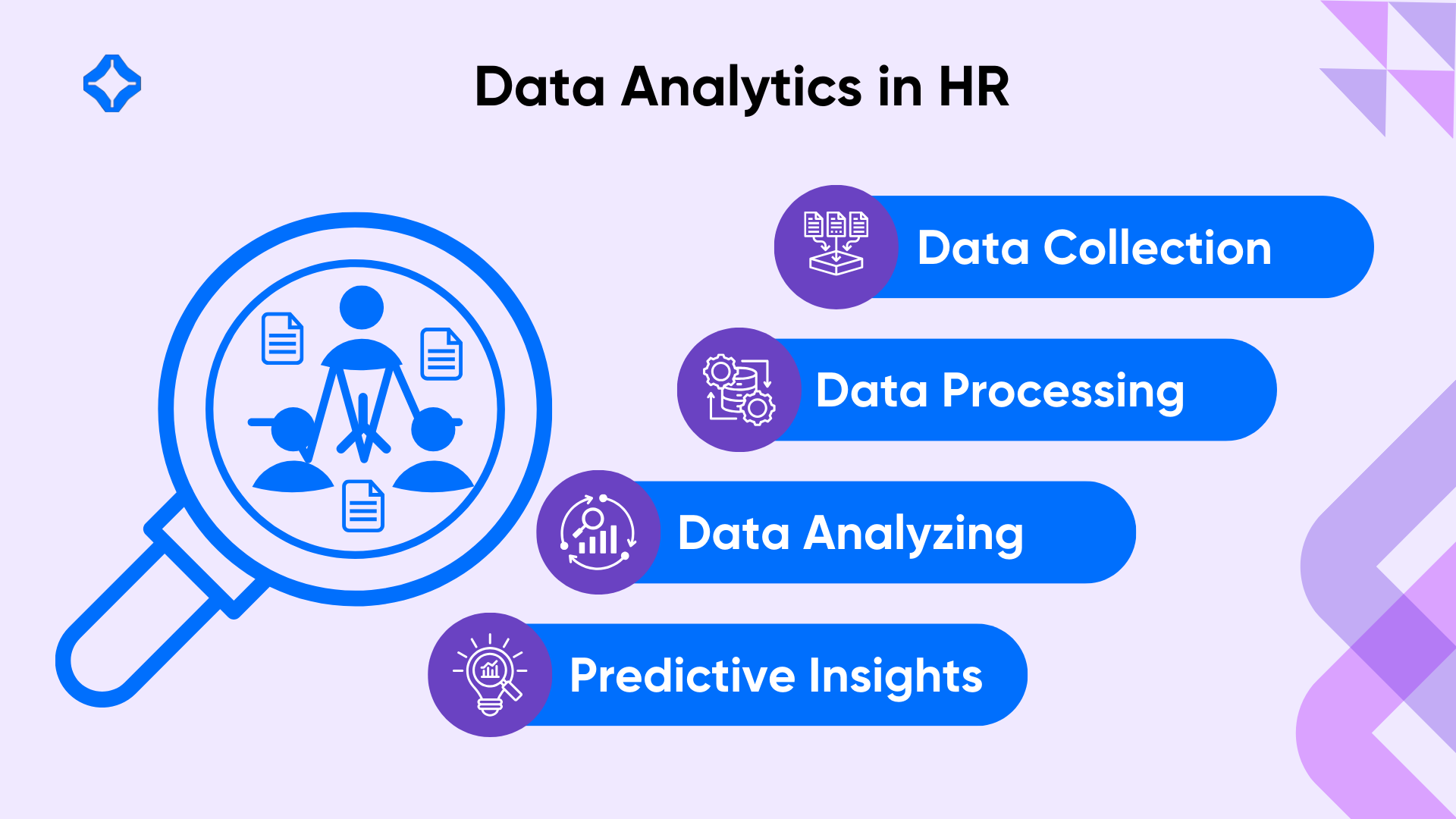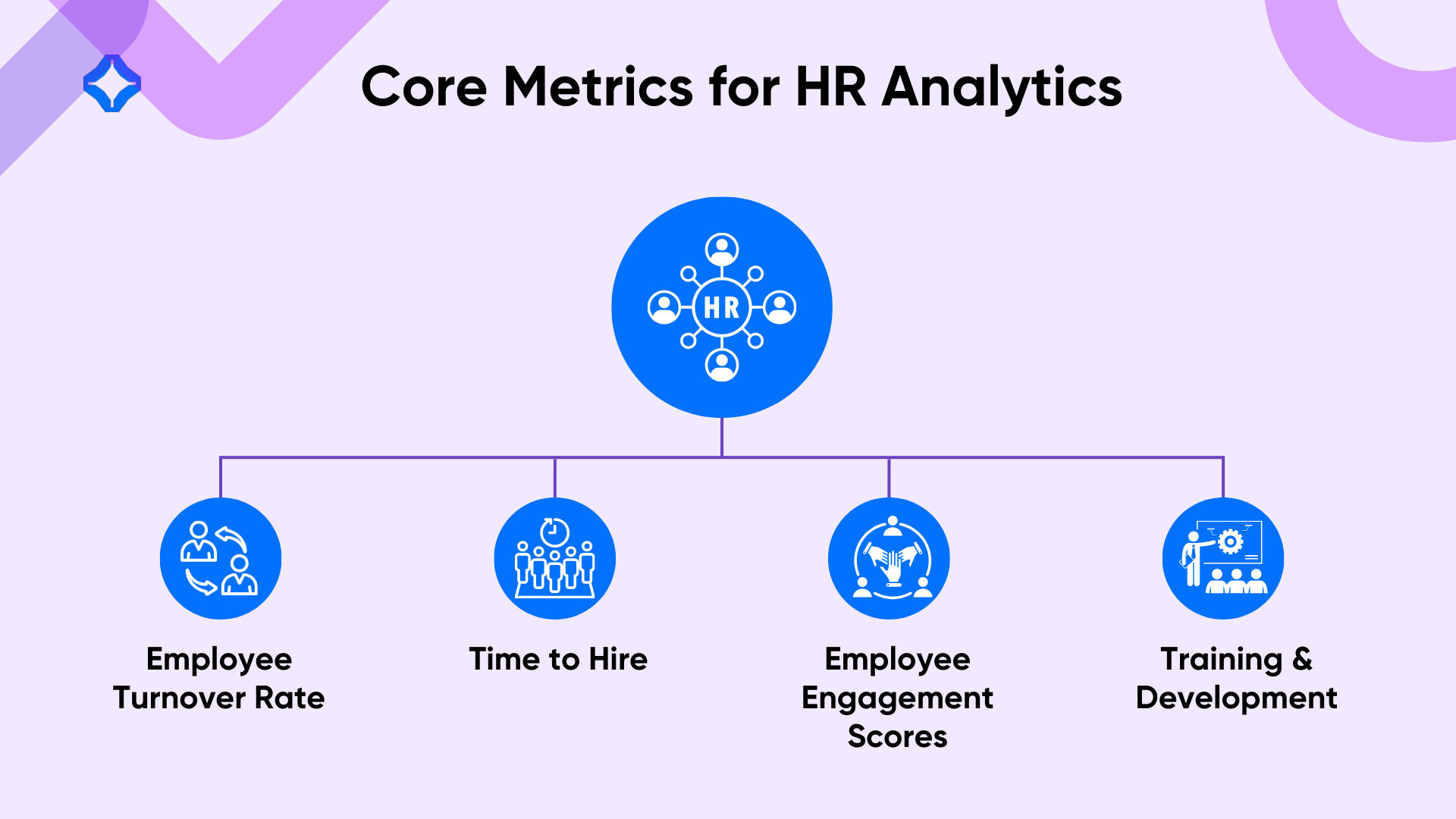The rapid growth of technology has transformed how businesses manage their workforce, and SaaS HR tools are at the forefront of this change. These platforms integrate data analytics to provide actionable insights, helping HR teams make smarter and more informed decisions.
Whether it’s reducing employee turnover, improving recruitment strategies, or enhancing overall productivity, data analytics equips HR with the tools needed to align workforce management with organizational goals.
What is Data Analytics in SaaS HR Tools?
Defining Data Analytics in HR

Data analytics in SaaS HR tools involves the collection, processing, and analysis of employee-related data. This data is used to uncover trends, predict outcomes, and guide HR strategies. Unlike manual data handling, these tools automate processes, providing quick and accurate insights.
How SaaS HR Tools Utilize Data
SaaS HR tools leverage cloud technology to store and analyze vast amounts of data securely. They use algorithms and visualization tools to transform raw data into meaningful information. This approach enables HR teams to identify patterns and make evidence-based decisions efficiently.
The Role of Data Analytics in HR Decision-Making
Supporting Strategic Planning
Data analytics equips HR teams with the ability to plan strategically, ensuring that workforce initiatives align with the organization’s goals.
By analyzing trends such as turnover rates, workforce demographics, and hiring patterns, HR can predict upcoming challenges and opportunities. A rise in turnover within a specific team may highlight dissatisfaction, prompting HR to implement retention programs or restructure workflows.
Additionally, understanding hiring rates and gaps helps HR allocate resources effectively, such as planning budgets for recruitment drives or training programs. These strategies ensure the organization stays competitive and adaptable.
Enhancing Recruitment and Retention
Recruitment and retention are pivotal to maintaining a productive and motivated workforce, and data analytics provides critical insights to optimize these processes. HR teams can analyze recruitment data, such as candidate engagement rates, time-to-hire, and job offer acceptance trends, to refine hiring practices.
Identifying why candidates drop out of the application process can help streamline recruitment workflows. Similarly, analyzing employee engagement surveys, turnover data, and exit interviews reveals why employees leave or stay.
These insights allow HR to enhance onboarding programs, offer better benefits, or create career development opportunities, ensuring a satisfied and committed workforce.
Driving Performance Management
Project management becomes more effective and unbiased when driven by data analytics. SaaS HR tools track metrics such as individual productivity, attendance, and progress toward goals, providing managers with real-time insights.
A manager can assess how an employee’s project completion rate aligns with overall team objectives, ensuring fair evaluations. These tools also help identify top performers who may deserve recognition or promotion and highlight areas where additional training is needed.
By enabling data-driven reviews, HR promotes transparency and ensures employees feel their contributions are evaluated fairly, leading to increased trust and morale.
Core Metrics Tracked by SaaS HR Analytics

Employee Turnover Rate
This metric helps HR teams monitor the rate at which employees leave the organization. High turnover can indicate workplace issues, enabling HR to address them promptly.
Time-to-Hire
Time-to-hire tracks how long it takes to fill open positions. Analytics makes this process faster by spotting delays and offering ways to improve.
Employee Engagement Scores
Engagement scores show how satisfied and motivated employees feel. HR tracks these scores to create programs that improve the employee experience.
Training and Development
Analytics tracks the effectiveness of training programs by measuring their impact on employee performance. This ensures that resources are invested in valuable initiatives.
Benefits of Leveraging Data Analytics in HR
Improved Decision-Making
Data analytics empowers HR teams to make informed decisions by eliminating guesswork and relying on actionable insights. These insights provide a clearer understanding of workforce trends and performance patterns.
For example, HR can use data to identify high-performing employees for promotion or detect areas where productivity lags. With this information, HR teams can implement more effective strategies that align workforce management with business goals, ensuring decisions are both accurate and impactful.
Enhanced Employee Experience
Analyzing engagement data allows HR teams to better understand employee satisfaction and address concerns proactively. By identifying what motivates employees or where dissatisfaction arises, HR can create initiatives that cultivates a positive work environment.
Programs such as flexible work schedules, wellness benefits, or personalized career development plans can significantly boost morale.
A workplace that prioritizes employee well-being leads to higher productivity, improved retention, and stronger loyalty, all of which contribute to organizational success.
Cost Savings
Analytics uncovers inefficiencies in HR processes that might otherwise go unnoticed.. For example, delays in recruitment or underperforming training programs can drain resources without delivering results.
Data analytics highlights these inefficiencies, enabling HR to streamline processes and focus on high-value activities. By optimizing resource allocation, organizations save costs while improving outcomes.
This cost-effectiveness is especially beneficial for companies looking to scale their operations without compromising quality.
Predictive Insights
SaaS HR analytics tools excel in predicting future trends, giving HR teams a competitive edge. These tools can forecast potential challenges such as turnover spikes, skill gaps, or shifts in workforce demographics.
Armed with these predictive insights, HR can take preventive measures, like planning targeted retention efforts or upskilling programs. Staying ahead of these challenges ensures smoother operations. It also helps the organization adapt to a shifting business environment.
Challenges in Adopting Data Analytics in HR
Data Privacy and Security Concerns
Managing sensitive employee data is a big responsibility and can be risky without proper security measures. Data breaches or unauthorized access can lead to legal penalties, financial loss, and damage to employee trust.
To mitigate these risks, organizations must implement robust encryption, secure access controls, and regular audits to ensure data remains protected. Compliance with data protection regulations, such as GDPR or HIPAA, is equally crucial to maintain ethical standards and avoid legal complications.
Resistance to Change
Introducing data analytics tools into HR processes often meets resistance due to fear of change or misconceptions about technology replacing human judgment. Team members unfamiliar with analytics tools may feel intimidated or doubtful about their effectiveness.
To address this, organizations should invest in comprehensive training programs that demonstrate how analytics enhances, rather than replaces, HR decision-making.
Data Overload
While data is a powerful asset, collecting excessive amounts without a clear strategy can overwhelm HR teams. Too much information can lead to analysis paralysis, where teams struggle to derive meaningful insights.
Cost of Implementation
The upfront costs associated with adopting SaaS HR analytics tools can pose a challenge, particularly for smaller organizations with limited budgets. These expenses may include software subscriptions, system integration, training programs, and initial infrastructure upgrades.
Best Practices for Implementing Data Analytics in SaaS HR Tools

Start with Clear Objectives
Define specific goals you want to achieve, such as reducing employee turnover, enhancing recruitment efficiency, or improving employee engagement. Clear objectives act as a roadmap, ensuring your efforts are focused and measurable.
For example, tracking retention rates could lead to actionable insights for better onboarding processes. By setting well-defined goals, organizations can make better use of their data and evaluate the success of their initiatives more effectively.
Train Your Team
Conduct workshops or hands-on sessions to familiarize HR teams with the platform’s features and capabilities. Show them how to interpret data and integrate insights into decision-making processes.
When teams understand the value of analytics and feel confident using the tools, adoption rates improve significantly. This also reduces resistance to change and ensures that data analytics becomes an integral part of HR workflows.
Focus on Relevant Metrics
With the abundance of data available, it’s tempting to track every metric, but this can lead to wasted effort and analysis paralysis.
Focus on metrics that directly align with your organization’s goals. For example, if the objective is to improve recruitment, track metrics like time-to-hire or offer acceptance rates.
Ensure Data Security
Protecting employee data is a fundamental responsibility when using SaaS HR tools. Employ strong security protocols, such as encryption, firewall protection, and multi-factor authentication, to safeguard sensitive information.
Limit data access to authorized personnel and conduct regular security assessments to address potential vulnerabilities. Robust data security measures are essential for ensuring the safe and ethical use of HR analytics.
Future Trends in SaaS HR Analytics
AI-Driven Insights
Artificial intelligence is set to play a significant role in HR analytics by offering deeper insights through advanced algorithms. AI can help predict trends and automate decision-making processes.
Personalized Employee Experiences
Future SaaS tools will likely focus on delivering personalized recommendations for career development, training, and wellness programs based on individual data.
Integration with Other Business Tools
SaaS HR platforms will increasingly integrate with finance, operations, and CRM tools to provide a complete understanding of the workforce impact on overall business performance.
Real-Time Analytics
Real-time data processing will enable HR teams to make immediate decisions, responding quickly to workforce trends and challenges.
Conclusion
Data analytics in SaaS HR tools is revolutionizing workforce management, enabling smarter and more strategic decisions. By tracking key metrics and leveraging predictive insights, these tools help HR teams address challenges and optimize processes.
As technology advances, the role of data analytics in HR will only grow, offering even more opportunities for organizations to succeed in a competitive environment.